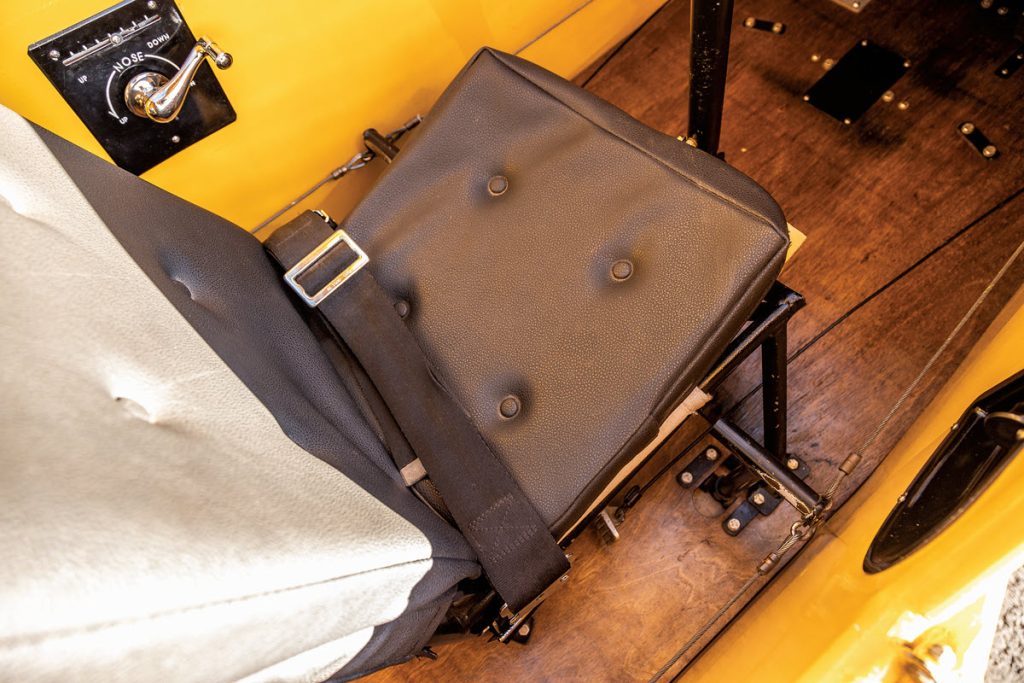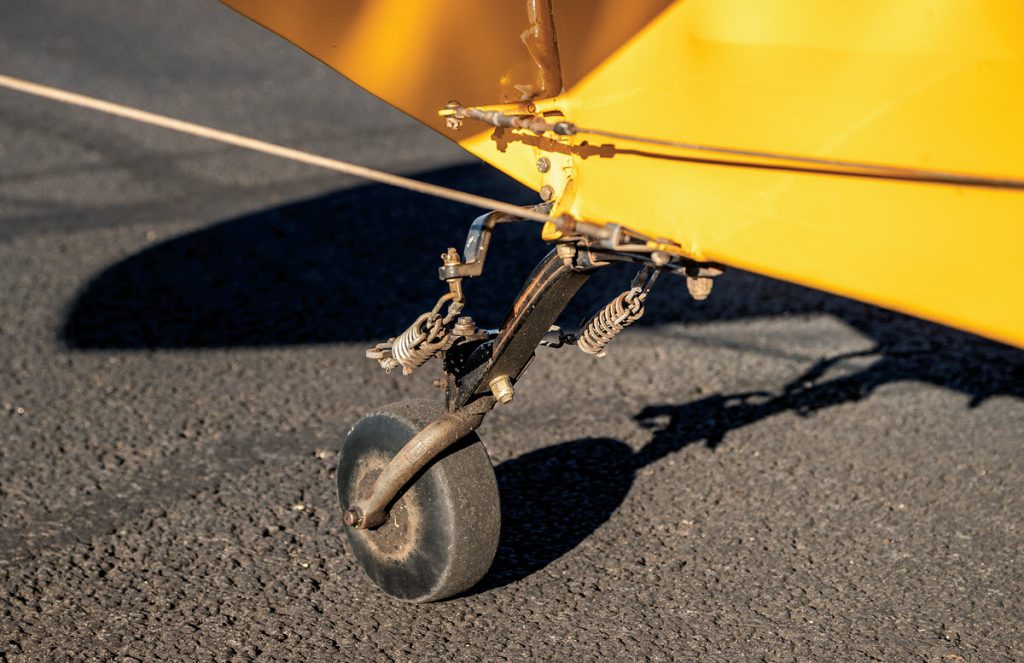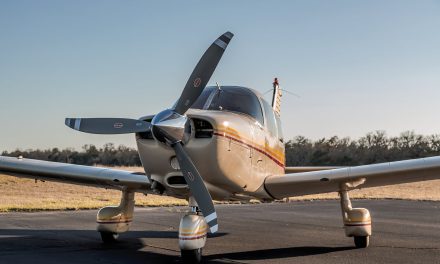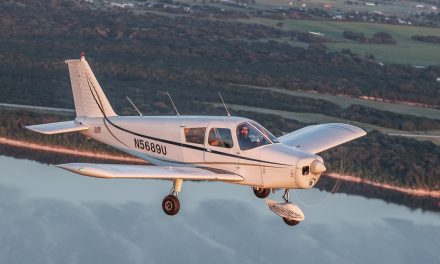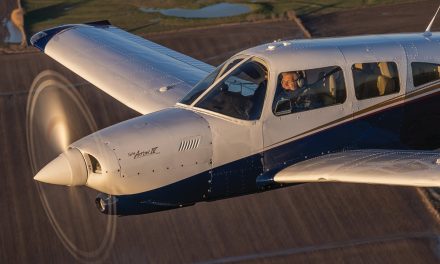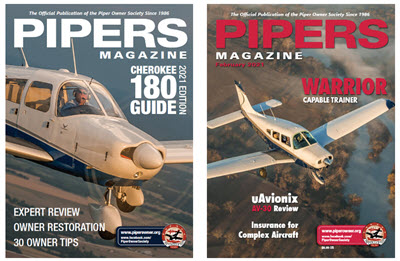
By Michelle Adserias
She’s fast. She’s fun. And there’s no one Shaye Fowler would rather soar into the skies with than Maybelline, his 1946 Piper J-3 Cub. “She’s beautiful to me and Maybelline means ‘lovable.’ How can someone that’s into aviation not love a J-3?” Shaye explained.
Not that he and Maybelline always fly alone. Shaye enjoys flying with his kids and his fiancé. “I’m also a huge advocate of getting kiddos flying.” So, some of his passengers are taking their first flight and it brings Shaye a great deal of joy to introduce them to the world of aviation.
His own introduction to airplanes came at an early age. Shaye grew up on a Texas ranch with a private runway near their house. The flying bug bit him when he was only four years old, watching Lears, Citations and the occasional King Air fly in on the weekends. Though he never lost his interest in flying, he didn’t begin seriously pursuing it until he took his discovery flight 40 years later, in 2017.
Shaye received his private pilot certificate (PPC) on November 5, 2020 at KAUS in Austin, Texas. Why there? “I wanted to get the experience of flying out of Charlie airspace. Nothing like being in a 172 and having a Boeing 737 in front of you and an Airbus 320 behind you!”
It’s that same adventurous spirit that takes him to local fly-ins and draws him to grass landing strips. Of course, Maybelline’s tundra tires make landing on unpaved surfaces a more natural fit.
An Intentional Choice
Shaye’s decision to purchase N98762 was very intentional. He wanted an airplane that he felt would make him a better pilot by developing his stick and rudder skills. “A tailwheel can be a handful if you don’t bring you’re ‘A’ game, so rudder skills are a must.”
The low cost of operating and maintaining his J-3 Cub was also a plus. “Maybelline is equipped with a C-85-12 and fuel burn is right at five gallons per hour.” With the cost of an annual inspection, insurance and general maintenance, he calculates his flying costs at about $65 per hour.
And the J-3 Cub is just fun to fly!
The fact that N98762 was in “immaculate condition” when Shaye purchased her didn’t hurt either. The only necessary repair was replacing the propeller. The previous owner over-torqued the Sensenich wooden propeller – which left a crack in the wood laminate and elongated the propeller bolt holes.
Last year, Shaye purchased a McCauley 1B90/CM7142 and had it installed. He’s very happy with the new climb propeller’s performance, as opposed to the previous cruise prop. Maybelline comes off the runway a great deal faster now.
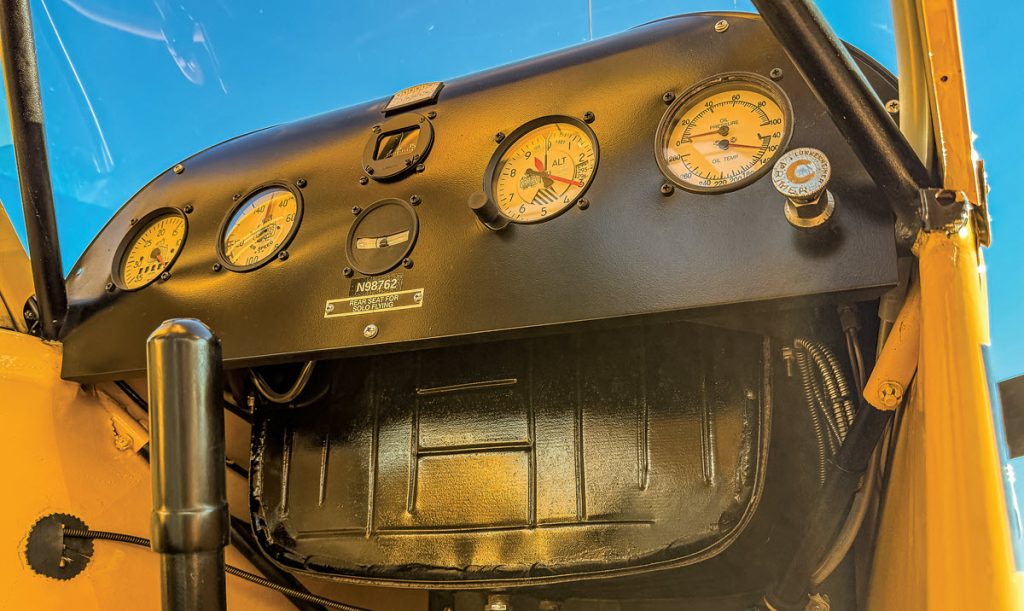
Other Upgrades
Because his J-3 Cub was in such good condition when he purchased it, Shaye has not made extensive upgrades. He has installed a new Airpath Compass and an internal antenna from Advanced Aircraft Electronics. He’s currently in the process of replacing the seat cushions. The only other upgrade he’s considering is adding a starter to put a stop to the “Armstrong” method. “Hand-propping can be a chore and I’m not getting any younger – ha ha!”
Airworthiness Directives (ADs) and Service Bulletins have not posed any problems, nor has finding parts. Shaye has used Aircraft Spruce, Chief Aircraft, and Univair for sourcing parts in the past, but finds Univair the best place to locate the specialty parts he needs for his J-3 Cub.
The only maintenance challenge Shaye has faced is finding someone who knows how to do fabric work. Right now, all is well, but he anticipates Maybelline needing work in the future. He only hopes it won’t become a lost art, and his lovely plane grounded in the process. It is potentially an issue that could threaten the longevity of all fabric planes.
The Piper J-3 Cub in WWII
Although originally produced as a recreational aircraft for private pilots, the J-3 Cub was adapted for military use during World War II and renamed the L-4 Grasshopper for use in the Army and NE-1 for use in the Navy. (You can learn more about this at: simpleflying.com/piper-cub-story-guide/)
The most notable change was a modification to the tops of their wings. A mechanism that hooked onto special gear on the underside of a blimp was added. The pilot could release the airplane from the blimp to carry out the assigned mission. The L-4 (NE-1) was not equipped to reattach to the blimp, however. Both aircraft would reunite at an established air base when the mission was completed.
Because it required little space for takeoffs and landings, it was ideal for reconnaissance missions, liaison duties and spotting artillery. This little gem also proved valuable in observing and coordinating battlefields. But its military duties didn’t end there. The L-4 (J-3 Cub) was actively involved in the North Africa, Italy and Normandy invasions.
By the time the United States entered the war, 75% of the pilots had already trained for battle in a J-3 Cub through the Civilian Pilot Training Program which began in 1938 in anticipation of wartime needs. The most renowned of these pilots was “Bazooka Charlie” Carpenter, who mounted bazookas on his Piper, nicknamed “Rosie the Rocketeer” and used them to attack German tanks.

Back to Civilian Life
Shaye continues making the most of his flying time. He averages about 50-75 hours a year, though he wishes it were more. Perhaps he’ll top that number this year. When he sees the impact aviation has on people’s lives, it’s hard to keep those tundra tires on the ground.
Last summer, Shaye discovered a friend’s son was interested in becoming a pilot, so he took this preteen to an air show. The event included the Thunderbirds performing spectacular maneuvers and an opportunity to explore various military aircraft on display. The young man also spoke with Air Force recruiters, which left a lasting impression.
After the Cub’s annual inspection, Shaye took the young man on his very first flight in a GA tailwheel aircraft. As they went through the preflight inspection, Shaye explained the workings of the aircraft and the importance of safety measures. Then it was time for takeoff. “He eagerly held the brakes while I hand-propped the airplane, later admitting that his legs were trembling with excitement.”
They performed the engine runup together and, as they held the brakes and pulled the carb heat, Shaye explained why these steps are crucial. The young man was smiling ear to ear throughout the flight and capturing videos and photos of the entire experience. “Upon landing, he couldn’t stop talking about how amazing the flight was. It’s safe to say he’s hooked on aviation!” Shaye presented him with a wing’s pendant with Maybelline’s tail number – a small gesture that left a big impression. His friend’s son has since joined the Air Force ROTC, taking his first steps toward his dream to become a pilot. It’s no wonder Shaye is an enthusiastic advocate of discovery flights!
Shaye hopes to add one more adventure to his list this summer, a new outing for Maybelline as well – a trip to AirVenture.
The rest of this article can be seen only by paid members who are logged in.
Have a website login already? Log in and start reading now.
Never created a website login before? Find your Customer Number (it’s on your mailing label) and register here.
JOIN HERE
Still have questions? Contact us here.





